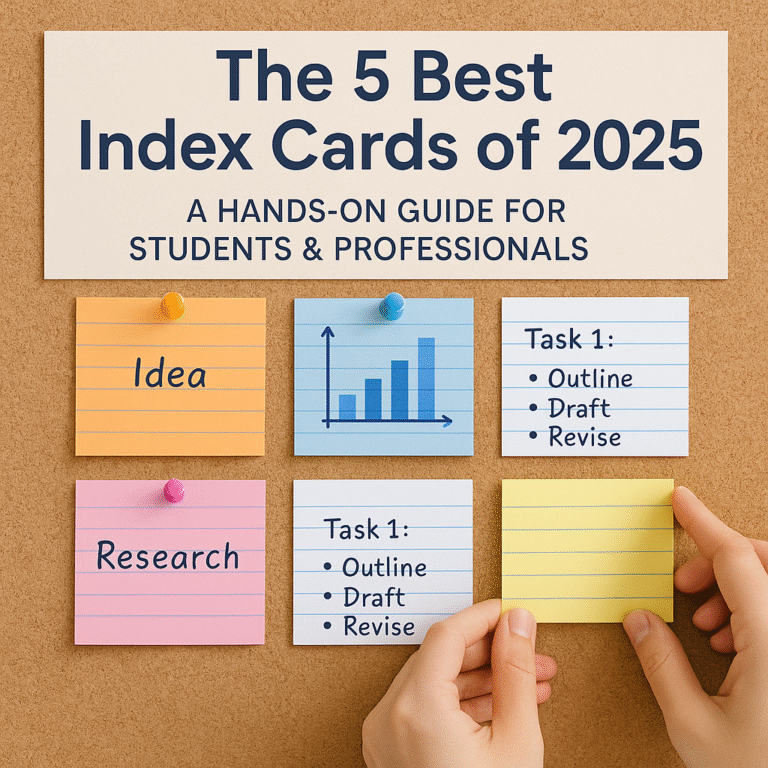Unwinding with Ease: Some Examples of Passive Leisure Activities
In our fast-paced, always-on world, the concept of leisure often conjures images of intense physical activity, bustling social events, or demanding creative pursuits. While active leisure certainly has its place in promoting well-being, there’s an equally vital, yet often overlooked, component to a balanced lifestyle: passive leisure. These are activities that require minimal physical or mental effort, allowing for true rest, reflection, and rejuvenation. Embracing passive leisure can significantly reduce stress, improve mental clarity, and enhance overall quality of life.
This comprehensive guide will delve into what passive leisure entails, explore its numerous benefits, and provide a rich list of examples you can incorporate into your daily routine. We’ll also distinguish it from active leisure and discuss how a healthy balance of both contributes to holistic well-being.
Understanding Passive Leisure: The Art of Effortless Enjoyment
Passive leisure activities are characterized by their low energy demands. Unlike active leisure, which often involves physical exertion, mental challenge, or social interaction (e.g., playing sports, learning a new skill, volunteering), passive leisure allows you to simply be. It’s about consuming content, observing, or engaging in gentle, unhurried pursuits that don’t tax your body or mind. The primary goal is relaxation, stress reduction, and mental disengagement from daily pressures.
The beauty of passive leisure lies in its accessibility and flexibility. Many passive activities can be enjoyed from the comfort of your home, often requiring little to no special equipment or planning. They offer a much-needed counterbalance to the demands of work, responsibilities, and the constant stimulation of modern life.
The Undeniable Benefits of Embracing Passive Leisure
While the allure of “being productive” even in downtime can be strong, neglecting passive leisure comes at a cost. Integrating these low-effort activities into your life offers a myriad of advantages for your physical and mental health:
- Stress Reduction and Relaxation: Perhaps the most immediate benefit, passive leisure allows your nervous system to calm down. Activities like listening to music or watching a calming sunset can lower cortisol levels, reduce muscle tension, and promote a sense of tranquility.
- Mental Recharge and Clarity: Our brains are constantly processing information. Passive leisure provides an essential break, preventing mental fatigue and allowing your mind to wander, consolidate thoughts, and even spark new ideas without the pressure of active problem-solving. This mental downtime can lead to improved focus and productivity when you return to more demanding tasks.
- Improved Sleep Quality: Engaging in calming passive activities before bed can signal to your body that it’s time to wind down, leading to better sleep. Avoiding stimulating activities like intense screen time or vigorous exercise close to bedtime is crucial for a restful night.
- Emotional Regulation: Passive leisure can offer an outlet for emotional processing. Reading a novel might help you understand different perspectives, while simply observing nature can foster a sense of gratitude and connection, improving your overall mood and emotional resilience.
- Physical Recovery: For those who engage in strenuous physical activity, passive leisure is crucial for muscle recovery and preventing burnout. It allows your body to rest and repair, reducing the risk of injury and promoting overall physical well-being.
- Enhanced Creativity and Inspiration: When your mind is relaxed, it’s more open to creative thought. Passive activities can provide a fertile ground for inspiration, allowing you to absorb new ideas and perspectives without the pressure of immediate application.
- Social Connection (in a gentle way): While often solitary, some passive leisure activities can be shared, fostering gentle social bonds. Watching a movie with loved ones or listening to a podcast together can provide shared experiences without demanding intense interaction.
Distinguishing Passive from Active Leisure
To fully appreciate passive leisure, it’s helpful to understand its distinction from active leisure. Both are essential for a balanced life, but they serve different purposes.
Active Leisure typically involves:
- Significant physical exertion (e.g., running, cycling, dancing).
- Mental engagement and problem-solving (e.g., playing complex board games, learning a new language, coding).
- Structured social interaction (e.g., team sports, group classes, volunteering).
- A clear goal or outcome.
Passive Leisure, on the other hand, is characterized by:
- Minimal physical effort (often sedentary).
- Low mental engagement (allowing the mind to relax or wander).
- Often solitary, though some activities can be shared without intense interaction.
- Focus on consumption, observation, and simple enjoyment rather than achievement.
Think of it this way: if active leisure is about doing, passive leisure is about being. A healthy lifestyle integrates both, allowing you to challenge yourself and grow, while also providing ample opportunity for rest and restoration.
Some Examples of Passive Leisure: A Diverse List for Restful Enjoyment
Here’s a comprehensive list of passive leisure activities, categorized for easy exploration, that can help you unwind and recharge. Many of these activities overlap, and the key is to choose what truly brings you peace and relaxation.
Media Consumption for Relaxation
These activities leverage various forms of media to provide entertainment, information, or sensory pleasure with minimal effort.
- Reading a Book or Magazine: Lose yourself in a captivating novel, explore a fascinating non-fiction topic, or flip through a glossy magazine. The act of reading allows your mind to travel without your body moving, providing an escape from daily stressors.
- Listening to Music: Curate playlists for different moods, discover new artists, or simply let familiar tunes wash over you. Music has a powerful ability to evoke emotions, calm the mind, and even reduce physical tension.
- Watching Movies or TV Shows: Binge-watching a compelling series, enjoying a thought-provoking documentary, or re-watching a beloved classic. The visual and auditory engagement can be incredibly immersive and relaxing.
- Listening to Podcasts or Audiobooks: Whether it’s a true-crime narrative, a comedy show, a historical account, or a self-help guide, podcasts and audiobooks allow you to absorb information or be entertained while resting your eyes and body.
- Browse Art or Photography Books/Online Galleries: Appreciate visual beauty without the pressure of creating your own. This can be a serene and inspiring way to spend time.
- Scrolling Through Social Media (Mindfully): While often criticized for its addictive nature, a mindful approach to social media can be passive. Curate your feed to focus on uplifting content, beautiful visuals, or niche interests, and avoid falling into comparison traps or engaging in arguments.
Gentle Observation and Sensory Engagement
These activities connect you with your surroundings or inner self through observation and subtle sensory experiences.
- People-Watching: Find a comfortable spot at a café, park, or public square and simply observe the ebb and flow of life around you. It’s a fascinating and surprisingly relaxing way to feel connected without direct interaction.
- Nature Observation (Birdwatching, Stargazing, Cloud Gazing): Take a moment to appreciate the natural world. Watch birds from your window, identify constellations on a clear night, or simply lie back and watch the clouds drift by. These activities foster a sense of wonder and calm.
- Sunbathing or Lounging in the Sun/Shade: Feel the warmth of the sun or the coolness of the shade on your skin. This simple act of basking can be incredibly restorative and is often associated with vacations and relaxation.
- Watching a Fireplace or Candle Flame: The mesmerizing flicker and gentle warmth of a fire can be deeply calming and meditative, providing a focal point for relaxation.
- Savoring a Hot Beverage: Slowly sip a cup of tea, coffee, or hot cocoa, focusing on the warmth, aroma, and taste. This mindful practice can be a small but significant moment of passive enjoyment.
- Taking a Relaxing Bath or Shower: Let the warm water envelop you, allowing your muscles to relax and your mind to clear. Add essential oils or bath salts for an enhanced sensory experience.
Restorative Physical States
These activities prioritize physical rest and gentle sensory input.
- Napping or Resting: Sometimes, the most passive form of leisure is simply allowing your body to rest. A short nap or even just lying down with your eyes closed can significantly improve energy levels and reduce fatigue.
- Gentle Stretching or Yin Yoga: While yoga can be active, very gentle stretching or a slow, restorative yin yoga practice focuses on holding poses for longer periods with minimal muscular effort, promoting deep relaxation and flexibility.
- Sitting in a Hammock or Comfortable Chair: The simple act of reclining in a comfortable position, free from the need to move or exert, is a cornerstone of passive leisure.
- Getting a Massage: This is the epitome of passive physical relaxation, where someone else does all the work to release tension in your body.
Mindful and Creative Engagement (Low-Effort)
While some creative pursuits are highly active, these examples focus on the process rather than the outcome, requiring minimal mental strain.
- Adult Coloring Books: Revisit the simple joy of coloring within lines. It’s a low-pressure creative outlet that engages your hands and eyes without demanding complex artistic decisions.
- Doodling or Sketching (without a specific goal): Let your pen or pencil wander on paper, creating abstract shapes or simple designs without any pressure for perfection. This can be a meditative and relaxing activity.
- Listening to a Gentle Podcast While Doing a Simple Craft: Activities like knitting, crocheting, or simple embroidery can be very repetitive and meditative, allowing your mind to relax while your hands are gently occupied. The focus is on the repetitive motion rather than complex patterns.
- Journaling (Freestyle, No Pressure): Instead of structured journaling, simply write whatever comes to mind without judgment. This can be a cathartic and reflective passive activity.
Integrating Passive Leisure into Your Life
Making time for passive leisure doesn’t require grand gestures or elaborate plans. Small, consistent efforts can make a significant difference:
- Schedule It: Just as you schedule work or appointments, carve out dedicated time for passive leisure. Even 15-30 minutes a day can be beneficial.
- Identify Your Preferences: What truly helps you unwind? Experiment with different activities to discover what resonates most with you.
- Create a Relaxing Environment: Dim the lights, put on some calming music, ensure comfort, and minimize distractions like notifications.
- Listen to Your Body: Pay attention to when you feel overwhelmed or drained. These are cues that you might need a dose of passive leisure.
- Don’t Feel Guilty: In a culture that often glorifies constant productivity, it’s easy to feel guilty for “doing nothing.” Remind yourself that passive leisure is not laziness; it’s a crucial component of well-being and a pathway to sustained productivity.
Conclusion
In a world that constantly pulls us towards activity and engagement, the importance of passive leisure cannot be overstated. From the simple pleasure of reading a book to the profound calm of observing nature, these low-effort activities provide an essential antidote to stress, mental fatigue, and burnout. By intentionally incorporating some examples of passive leisure into your daily life, you cultivate a more balanced existence, enhance your mental and physical health, and ultimately, live a more fulfilling and restorative life. So go ahead, give yourself permission to unwind, relax, and simply be. Your well-being will thank you for it.
Related Learning Resources
Examples of Passive Leisure
Explore relaxing leisure activities that support well-being and balance.
Why Prioritize Goals?
Learn how short, mid, and long-term goals shape productivity.
Build Effective Task Lists
Understand how to break down goals into actionable steps.
Service Marketing Basics
Discover core principles of marketing intangible services.
Forex Mistakes from Inexperience
See how lack of experience in forex trading leads to costly errors.




